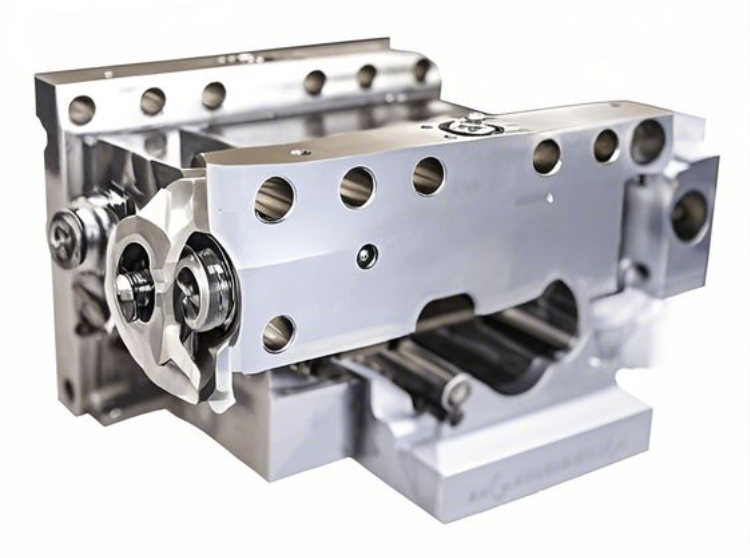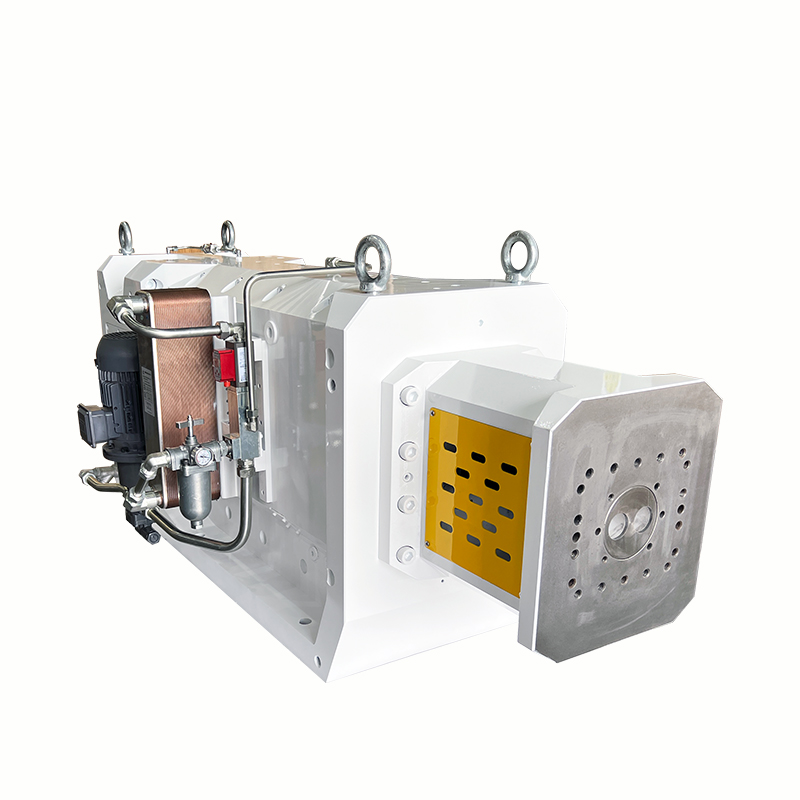Views: 0 Author: Site Editor Publish Time: 2025-03-20 Origin: Site








Extruder gearboxes are crucial for the extrusion process in industries like plastics, food, and metal processing. But what exactly are they, and how do they work? In this post, we’ll explore the main components of an extruder gearbox, their roles, and why they are vital for smooth, efficient operation. You’ll learn about the key parts that drive the extrusion process and how each contributes to product quality and performance.

An extruder gearbox is a mechanical device that plays a key role in extrusion systems. It connects the motor to the extruder screw, transmitting power from the motor to the screw. The gearbox is responsible for controlling the speed and torque, ensuring the extruder works efficiently to process materials like plastic or food ingredients.
The gearbox adjusts the motor's output to the optimal level for the screw's rotation. This adjustment is critical to melting and shaping the material as it moves through the extruder. Without this precise power transmission, the extrusion process would be inefficient and inconsistent.
Extruder gearboxes are crucial for managing the speed, torque, and overall efficiency of the extrusion process. By regulating these factors, the gearbox ensures that materials are processed at the right speed and temperature, leading to high-quality products.
With the right gearbox, the extruder operates smoothly, reducing wear and tear on other components. Gearboxes also improve the energy efficiency of the entire system, lowering operating costs over time. In short, they help maintain consistent product quality, reduce downtime, and optimize the extrusion process.
The input shaft is where the motor's power enters the gearbox. It connects directly to the motor and transmits rotational energy. This shaft ensures that the motor’s power is transferred effectively to the rest of the gearbox, starting the extrusion process.
The output shaft receives the power from the input shaft and transfers it to the extruder screw. This shaft's job is to control the screw’s rotation speed and torque, which is essential for processing the material at the correct rate. Maintaining optimal rotation speed helps ensure smooth and efficient extrusion.
Bearings are critical for reducing friction between the moving parts in an extruder gearbox. Thrust bearings and spherical roller bearings are commonly used to handle heavy axial loads. By minimizing friction and wear, bearings help the gearbox run smoothly, preventing damage and improving longevity.
Gears control the speed and torque in the gearbox. Different types, like helical and spur gears, are used based on the extrusion needs. The gears ensure that the extruder screw rotates at the right speed to process materials effectively.
Lubrication reduces friction between the gears and bearings, preventing excessive wear. It keeps the gearbox running smoothly and extends its life. Common lubrication systems, like forced lubrication, circulate oil to ensure all parts are adequately lubricated.
Seals are used to keep contaminants out of the gearbox and maintain the oil’s integrity. They ensure that the lubricating oil stays where it’s needed and helps the gearbox operate efficiently without foreign materials causing damage.
The gear housing protects the internal components, keeping them secure and aligned. Typically made of durable materials like cast iron or aluminum alloy, the housing ensures that the gearbox can withstand the stresses of the extrusion process.
Clutches and brakes help control the extrusion process. The clutch engages and disengages power transmission, allowing for a smooth start and stop. Brakes control the deceleration and stopping of the extruder, ensuring precision and safety during operation.

Extruder gearboxes generate a lot of heat during the extrusion process. If this heat isn't controlled, it can damage the components and reduce the system's efficiency. A cooling system helps regulate these high temperatures, ensuring the gearbox operates within safe limits.
There are different types of cooling methods used in extruder gearboxes. Air cooling is common and involves circulating air around the gearbox to dissipate heat. Water cooling is another option, where water is circulated through the gearbox to absorb and carry away heat.
The electrical control system plays a critical role in managing the extrusion process. It uses sensors, switches, and controllers to monitor various parameters such as speed and temperature. This system ensures that the gearbox operates smoothly and adjusts automatically to changes in conditions.
By providing real-time data, the control system helps operators make informed decisions and keep the process running efficiently. It also helps prevent issues like overheating or power irregularities, ensuring consistent product quality.
The mounting flange is essential for ensuring the extruder gearbox stays properly aligned during operation. It attaches the gearbox securely to the extruder machine, preventing vibrations and misalignment. A stable and secure flange ensures that all parts function smoothly, reducing the risk of mechanical failure during the extrusion process.
To keep your extruder gearbox running smoothly, regular maintenance is essential. One of the key tasks is maintaining proper lubrication. Be sure to check oil levels and ensure it circulates properly through the system. Regularly inspect the bearings for wear and tear, as damaged bearings can lead to inefficient operation or even failure.
Seals should also be checked frequently. A damaged seal can allow contaminants to enter and damage the gearbox. Always follow the manufacturer’s guidelines for routine maintenance to ensure longevity and performance.
Over time, extruder gearboxes can experience various problems. Some of the most common issues include excessive noise, overheating, and poor power transmission. These problems can arise due to lack of lubrication, damaged bearings, or misalignment of components.
To troubleshoot, start by listening for unusual noises, which often signal worn-out bearings or misaligned parts. If the gearbox is overheating, check for insufficient lubrication or clogged cooling systems. If power transmission is weak, inspect the gears and bearings for damage or misalignment.
Diagnosing these problems early can save time and prevent more severe damage to the gearbox. Regular inspections and monitoring can help catch issues before they affect the extrusion process.
Recent advancements in gearbox materials have significantly improved their durability and wear resistance. Manufacturers are now using high-strength alloys and advanced composite materials to build stronger, longer-lasting gearboxes. These materials help the gearbox withstand higher pressures and temperatures, extending its lifespan and reducing maintenance costs.
In addition, the use of wear-resistant coatings on components like gears and shafts helps reduce friction and prevent damage. This leads to smoother operation, fewer breakdowns, and increased overall efficiency.
Innovative designs in extruder gearboxes are improving their operational performance in several ways. New designs incorporate better gear ratios and precision components, which lead to smoother power transmission and reduced energy consumption. Some modern gearboxes are also incorporating modular designs, making it easier to replace or upgrade parts, further boosting efficiency.
Another key advancement is the integration of advanced cooling systems. These systems help maintain optimal temperatures, preventing overheating and ensuring consistent performance. With these innovations, extruder gearboxes are becoming more energy-efficient and better suited to handle the demands of modern manufacturing processes.
The main components of an extruder gearbox, like the input/output shafts, bearings, gears, lubrication, and seals, all play vital roles in ensuring smooth and efficient operation. Proper maintenance and troubleshooting are key to extending the gearbox’s lifespan and maintaining high performance. Looking ahead, emerging technologies and materials are driving efficiency and durability in extruder gearboxes, making them more reliable for future manufacturing needs.
A: An extruder gearbox transmits power from the motor to the extruder screw, controlling speed and torque for efficient material processing.
A: Common issues include overheating, excessive noise, poor power transmission, and wear on bearings and gears.
A: With proper maintenance, an extruder gearbox can last several years, depending on usage and operating conditions.
A: Regular maintenance, proper lubrication, and timely inspections of bearings and seals can significantly improve performance.
A: Yes, extruder gearboxes are tailored for specific applications, such as plastics, food processing, or metal industries, each with unique designs and components.